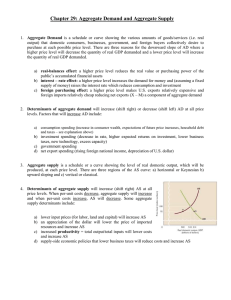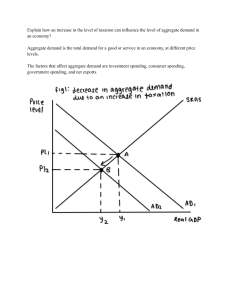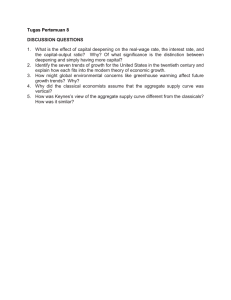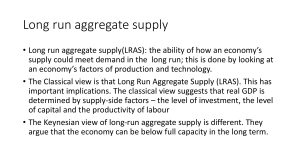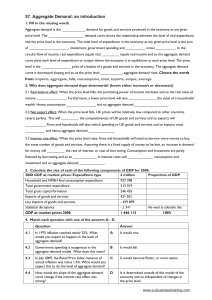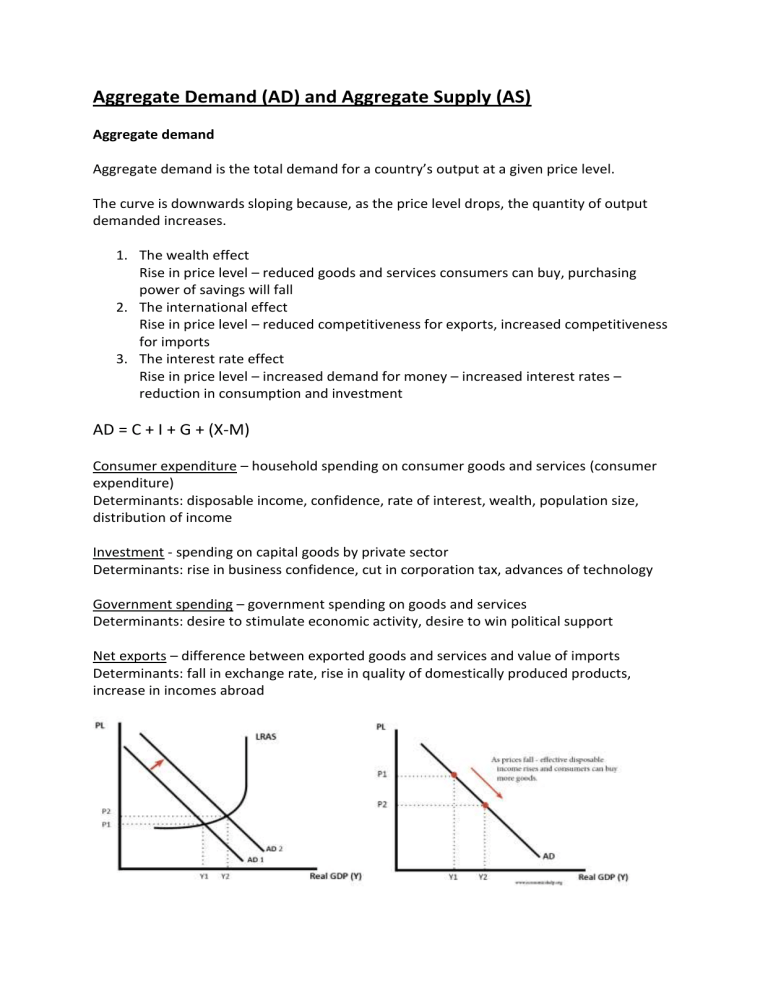
Aggregate Demand (AD) and Aggregate Supply (AS) Aggregate demand Aggregate demand is the total demand for a country’s output at a given price level. The curve is downwards sloping because, as the price level drops, the quantity of output demanded increases. 1. The wealth effect Rise in price level – reduced goods and services consumers can buy, purchasing power of savings will fall 2. The international effect Rise in price level – reduced competitiveness for exports, increased competitiveness for imports 3. The interest rate effect Rise in price level – increased demand for money – increased interest rates – reduction in consumption and investment AD = C + I + G + (X-M) Consumer expenditure – household spending on consumer goods and services (consumer expenditure) Determinants: disposable income, confidence, rate of interest, wealth, population size, distribution of income Investment - spending on capital goods by private sector Determinants: rise in business confidence, cut in corporation tax, advances of technology Government spending – government spending on goods and services Determinants: desire to stimulate economic activity, desire to win political support Net exports – difference between exported goods and services and value of imports Determinants: fall in exchange rate, rise in quality of domestically produced products, increase in incomes abroad Aggregate supply Aggregate supply is the total supply that domestic producers are willing and able to sell at a given price level. The curve slopes up from left to right. As price level increases, producers are willing and able to supply higher quantities. 1. The profit effect Price level increase – production costs stay the same – profit increases, incentive to produce 2. The cost effect Average cost may rise as output increases regardless of wages and raw materials remain at the same price, this is followed by producers asking higher prices 3. The misinterpretation effect Producers might confuse changes in price level with changes in relative prices (for their own product) and therefore may produce more Shifts and movements along SRAS Factors causing shifts Wages Raw material/ commodity prices Business taxes Import prices (firms relying on imports) Movements along the aggregate supply curve are caused by changes in the price level. Long run aggregate supply Factors causing shifts: Increased technology and investment Improved productivity Improved infrastructure Enterprise/ stimulation of invention and innovation Expanding the labour supply (migrants) Finding new resources Macroeconomic equilibrium is achieved when AD=AS.

